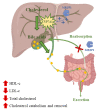Health Promoting Properties of Bee Royal Jelly: Food of the Queens
- PMID: 33562330
- PMCID: PMC7915653
- DOI: 10.3390/nu13020543
Health Promoting Properties of Bee Royal Jelly: Food of the Queens
Abstract
Royal jelly (RJ) demand is growing every year and so is the market for functional foods in general. RJ is formed by different substances, mainly carbohydrates, proteins, and lipids, but also vitamins, minerals, and phenolic or volatile compounds in lower proportion. Major royal jelly proteins (MRJP) are, together with 10-hydroxy-2-decenoic acid (10-HDA), key substances of RJ due to their different biological properties. In particular, 10-HDA is a unique substance in this product. RJ has been historically employed as health enhancer and is still very relevant in China due to the traditional medicine and the apitherapy. Nowadays, it is mainly consumed as a functional food or is found in supplements and other formulations for its health-beneficial properties. Within these properites, anti-lipidemic, antioxidant, antiproliferative, antimicrobial, neuroprotective, anti-inflammatory, immunomodulatory, antiaging, and estrogenic activities have been reported for RJ or its specific components. This manuscript is aimed at reviewing the current knowledge on RJ components, their assessment in terms of authenticity, their biological activities, and related health applications.
Keywords: 10-hydroxy-2-decenoic acid; authenticity; biological properties; health applications; main proteins of royal jelly; royal jelly.
Conflict of interest statement
The authors declare no conflict of interest.
Figures



References
-
- Wang Y., Ma L., Zhang W., Cui X., Wang H., Xu B. Comparison of the nutrient composition of royal jelly and worker jelly of honey bees (Apis mellifera) Apidologie. 2016;47:48–56. doi: 10.1007/s13592-015-0374-x. - DOI
-
- Hu F.L., Bíliková K., Casabianca H., Daniele G., Salmen Espindola F., Feng M., Guan C., Han B., Krištof Kraková T., Li J.K., et al. Standard methods for Apis mellifera royal jelly research. J. Apic. Res. 2019;58:1–68. doi: 10.1080/00218839.2017.1286003. - DOI
Publication types
MeSH terms
Substances
LinkOut - more resources
Full Text Sources
Other Literature Sources

